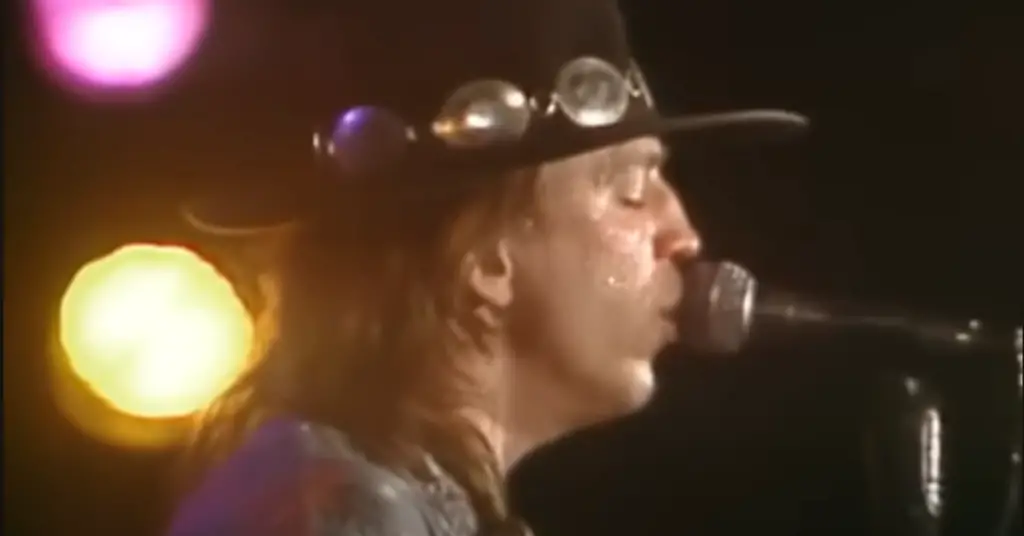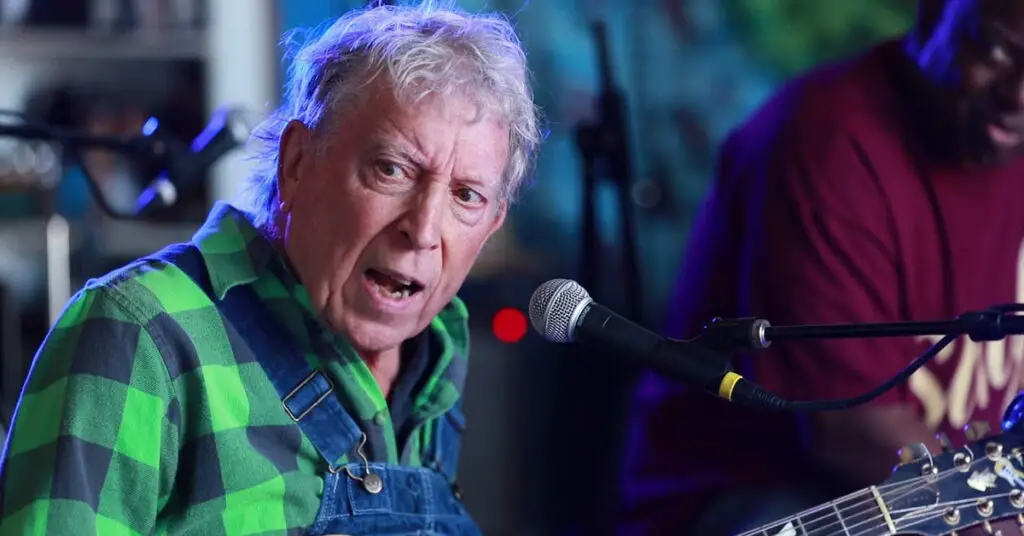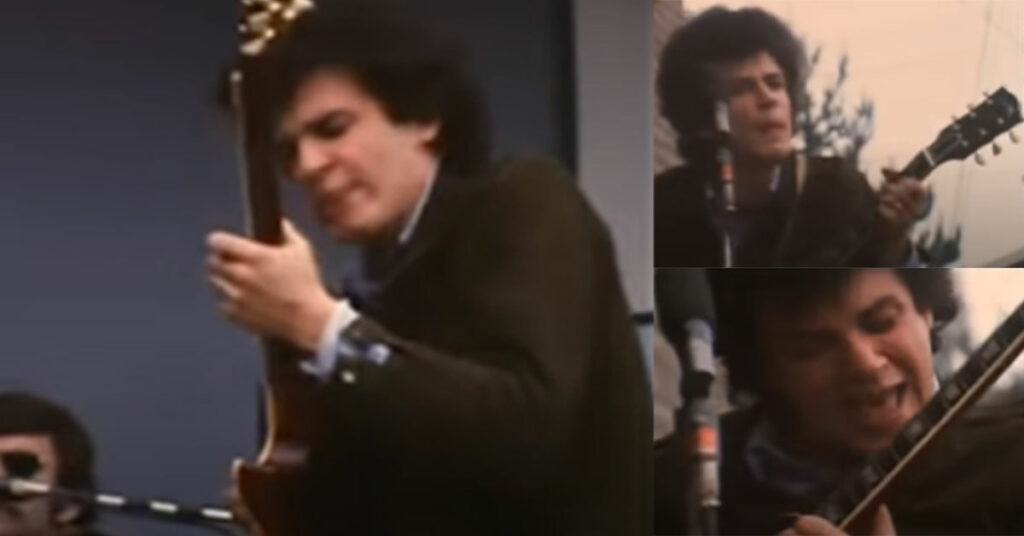Hubert Sumlin – The Guitarist Who Defined Blues and Inspired Rock
Hubert Sumlin, a name deeply etched in the annals of blues music, stands as a testament to the transformative power of the guitar in defining the genre. Best known for his groundbreaking work with blues legend Howlin’ Wolf, Sumlin’s innovative playing left an indelible mark on music history. From his pioneering collaborations to his influential solo career, Sumlin’s artistry earned him a revered spot among the greatest guitarists of all time.
The Howlin’ Wolf Years: A Partnership for the Ages
Sumlin’s partnership with Howlin’ Wolf began in the early 1950s, and it quickly evolved into one of the most fruitful artist-producer relationships in blues history. Born in Greenwood, Mississippi, and raised in Arkansas, Sumlin joined Howlin’ Wolf’s band as a young man. His raw talent and distinctive style soon became the cornerstone of the band’s sound.
Wolf’s powerful vocals and Sumlin’s innovative guitar riffs complemented each other perfectly. Songs like “Smokestack Lightning”, “Killing Floor”, and “Back Door Man” owe much of their enduring appeal to Sumlin’s unique approach to the guitar. His use of jagged, unpredictable rhythms and emotive bends revolutionized blues guitar playing, setting a standard for decades to come.
What made Sumlin truly remarkable during this period was his ability to adapt. Howlin’ Wolf demanded perfection and originality, and Sumlin rose to the occasion with a style that was as emotional as it was technically proficient. Whether using piercing single-note lines or creating a menacing atmosphere with unconventional chord voicings, Sumlin’s contributions were integral to Howlin’ Wolf’s legendary recordings.
The Road After Howlin’ Wolf
When Howlin’ Wolf passed away in 1976, Sumlin faced the challenge of stepping out of his mentor’s shadow. Despite this, he forged a successful solo career, releasing albums that showcased his versatility as both a guitarist and a bandleader. His albums, such as “About Them Shoes” and “Healing Feeling”, demonstrated his ability to stay relevant in a rapidly evolving musical landscape.
Sumlin became a sought-after collaborator, working with a wide range of artists across genres. His adaptability allowed him to cross musical boundaries, blending traditional blues with contemporary styles and ensuring his influence reached new generations of listeners.
An Influence That Transcended Generations
Hubert Sumlin’s impact on blues and rock music cannot be overstated. His inventive guitar work inspired countless musicians, from blues legends like Buddy Guy to rock icons such as Jimi Hendrix, Eric Clapton, and Stevie Ray Vaughan. Sumlin’s legacy is particularly significant in the rock world, where his emotive playing and willingness to take risks laid the groundwork for much of the genre’s early experimentation.
Rock stars Mick Jagger and Keith Richards of The Rolling Stones were among his most vocal admirers. They frequently cited Sumlin as a major influence on their music, with Richards once describing him as “the man who made the Wolf howl.” When Sumlin passed away in 2011, Jagger and Richards covered his funeral expenses as a tribute to his enormous contributions to music.
Why Hubert Sumlin Matters
Hubert Sumlin’s significance lies in his ability to bridge the past and the future. He was a torchbearer for the raw emotional power of the Delta blues while also a trailblazer who pushed the boundaries of what blues guitar could achieve. His unconventional techniques—playing slightly behind the beat, creating tension with his phrasing, and using silence as a powerful tool—set him apart from his contemporaries.
Moreover, Sumlin’s humility and dedication to the craft made him a beloved figure among musicians and fans alike. He continued performing well into his later years, often with the same passion and intensity that defined his early career.
A Legacy That Lives On
Hubert Sumlin’s name is synonymous with innovation, artistry, and resilience. His work with Howlin’ Wolf remains a blueprint for blues musicians, while his solo career underscores his ability to evolve and inspire. Whether through his influential recordings or the respect he garnered from legends like Jagger and Richards, Sumlin’s legacy is a reminder of the transformative power of the blues.
Today, Sumlin ranks high among the greatest guitarists of all time, not just for his technical skill but for the soul and originality he brought to every note he played. His funeral, paid for by rock royalty, is a poignant symbol of the profound impact he had on music—a legacy that continues to resonate with musicians and fans worldwide.
Thank you Huber Sumlin Fans
We appreciate your time and dedication to reading our article. For more of the finest blues guitar music, make sure to follow our Facebook page, “I Love Blues Guitar”. We share exceptional selections every day. Thank you once again for your continued support and readership.


![Hubert Sumlin – Smokestack Lightning [video]](https://ilovebluesguitar.com/wp-content/uploads/2024/11/hubert-sumlin-smokestack-lightning-200x105.jpg)
![Skip James – Hard Times Killing Floor Blues [video]](https://ilovebluesguitar.com/wp-content/uploads/2024/11/skip-james-hard-times-killing-floor-blues-200x105.jpg)
![Stevie Ray Vaughan – Texas Flood (Live at the El Mocambo) [video]](https://ilovebluesguitar.com/wp-content/uploads/2025/09/image-44.png)

![Elvin Bishop and the Big Fun Trio – What the Hell [video]](https://ilovebluesguitar.com/wp-content/uploads/2024/09/elvin-bishop-and-the-big-fun-trio-what-the-hell-200x105.jpg)

![Mike Bloomfield – Drinking Wine [video]](https://ilovebluesguitar.com/wp-content/uploads/2024/09/mike-bloomfield-drinking-wine-200x105.jpg)

![Steve Cropper – Green Onions [video]](https://ilovebluesguitar.com/wp-content/uploads/2024/11/steve-cropper-green-onions-200x105.jpg)
![Robben Ford – Freedom [video]](https://ilovebluesguitar.com/wp-content/uploads/2024/11/robben-ford-freedom-200x105.jpg)
![Stevie Ray Vaughan – Look At Little Sister [video]](https://ilovebluesguitar.com/wp-content/uploads/2024/05/stevie-ray-vaughan-look-at-little-sister-200x105.jpg)


![Freddie King – Hide Away [video]](https://ilovebluesguitar.com/wp-content/uploads/2022/12/freddie-king-hide-away-200x105.jpg)